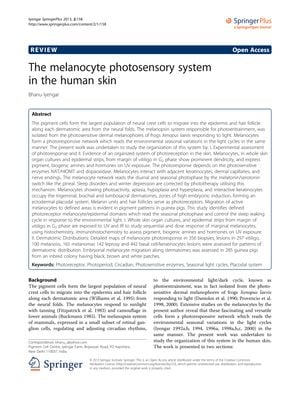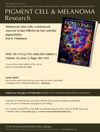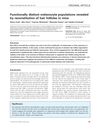The Melanocyte Photosensory System in Human Skin
April 2013
in “
SpringerPlus
”
melanocyte UV light IR light dendricity biogenic amines catecholamine indoleamine photoresponse dermatomes pigment production hormone expression sleep-wake cycles vitiligo melanosis melanomas leprosy basal cell lesions keratinocyte lesions ultraviolet light infrared light skin pigment skin hormones skin lesions

TLDR Human skin's melanocytes respond to light by changing shape, producing pigments and hormones, which may affect sleep patterns.
The document from April 12, 2013, explores the melanocyte photosensory system in human skin and its response to UV and IR light exposure. The study found that melanocytes increase dendricity in response to UV light, with the effect lasting for 3 hours and peaking at 120 seconds of exposure. Melanocytes also express biogenic amines and hormones after UV exposure, with catecholamine levels peaking 3 hours post-exposure and indoleamine activity varying between light and dark. The study mapped the photoresponse of melanocytes in various skin conditions and found a higher photoresponse in certain dermatomes. It concluded that melanocytes form a photosensory system that responds to environmental light, influencing pigment production, catecholamine levels, and hormone expression, and potentially affecting sleep-wake cycles. The study included detailed maps of melanocyte photoresponse in 356 biopsies, lesions in 297 vitiligo, 100 melanosis, 165 melanomas, 142 leprosy, and 442 basal cell/keratinocyte lesions, as well as embryonal melanocyte migration along dermatomes in 285 guinea pigs. However, the sample size for the human study was not provided.


